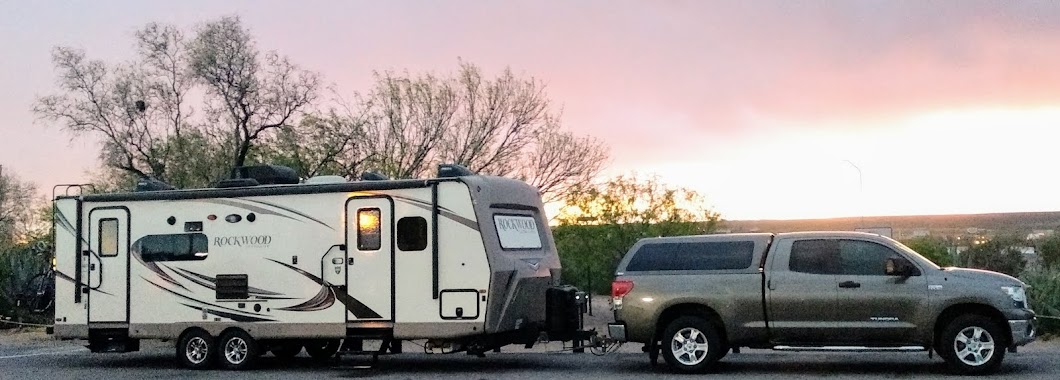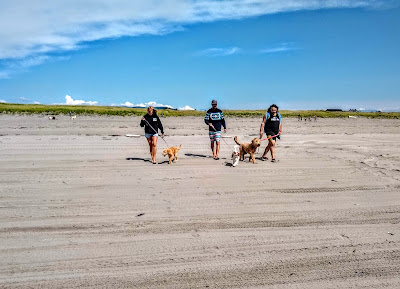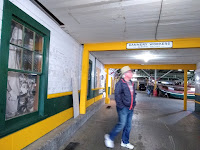From: casarollnotes.blogspot.com
Tim and Linda Bunyan
We are at the Washington State, Cape Disappointment State Park while we focus on the destination of Lewis & Clark Corps of Discovery Expedition, the first American expedition to cross the western portion of the United States. (5/14/1804 - 9/23/1985).
Cape Disappointment could not be explored by ship as the river's entrance was not locaed. English Captain John Meares, 1788, named the headland Cape Disappointment located at the north side of the Columbia River, two miles southwest of the town of Ilwaco.
We set out along the Colombia River (North Side). From the Station Camp (abandoned Indian Village) to Dismal Point.
The below pic is the autual site Lewis and Clark climbed to view the Pacific Ocean.
View to the Pacific. Statement by Lewis "What a Handsome Sight"! He worked (1801 - 1803) for then President Thomas Jefferson as his personal secretary.
WE retraced their trail along the Colombia River as they arrived the mouth of the river. It rained everyday. The Corp could not cross the River. They went ashore in a small cove, Capt William Clark called "that dismal little nitch. Severe winter storm struck the area forcing them off the river for six days and preventing them from meeting the suplly ships.:
Dismal Nitch is now a Rest Area.
This lady was raising money for the local Food Bank taking donations by offering Coffee and Cookies.
Station Camp, the last camp the Corp made on their journey.
The natives gifted their boat. This boat was highly desireable to Lewis and Clark to cross the Columbia River.
This Station Camp the Corps decided where to spend the winter. They considered the climate, the possibility of an exploring or trading ship visiting the mouth of the Columbia and the availability of game and the salt to cure it.
Nearby the Long Beach Peninsula and a four-mile long bridge to Astoria, Oregon, Fort Columbia is in a secluded area. There is a museum, spectacular views, cozy two-story building, refurbished open as a B&B.
Located on Chinook Apoint at the mouth of the Columbia
Artilery batteries and picnicking facilities make for interesting history and compelling place to be.
Fishing town at the mouth of the Columbia River: Ilwaco.
Fishing Fleet
We head for the beach: Long Beach, north of the Cape. From the street onto the large beach everyone enjoying the fresh ocean air and the waves and lots of beach space.!


Sand tire Bikes and Eagles.
People with their Dogs play at the beach.
Tim and I walking on the beach. The background point of land is the Cape area and the uppermost mountain Lewis and Clark climbed to view the Pacific Ocean.........No vehicles on the beach then when they looked to the North. Just a journal notation of a long beach......28 miles of beach!!!
North Head Lighthouse
We depart Lewis & Clark Corp of Discovery area. They stayed on the other side (near Astoria) which was our previous stop. The Columbia River still rules in strength challending ships to this day.
We are heading north. We are going to stop to visit my cousin Colleen and Gary and their son, Tommy and daughter Melissa in Ocean Shores for the 4th of July holiday. Colleen and Gary frequent their ocean shores house as a Family Tradition having built and owned it for over 20 years.
We drive thru Hoquiam, Washington a town where I lived in my second grade and half of my third grade before we moved as a family to California.
Onward to Ocean Shores, Washington!


































































































